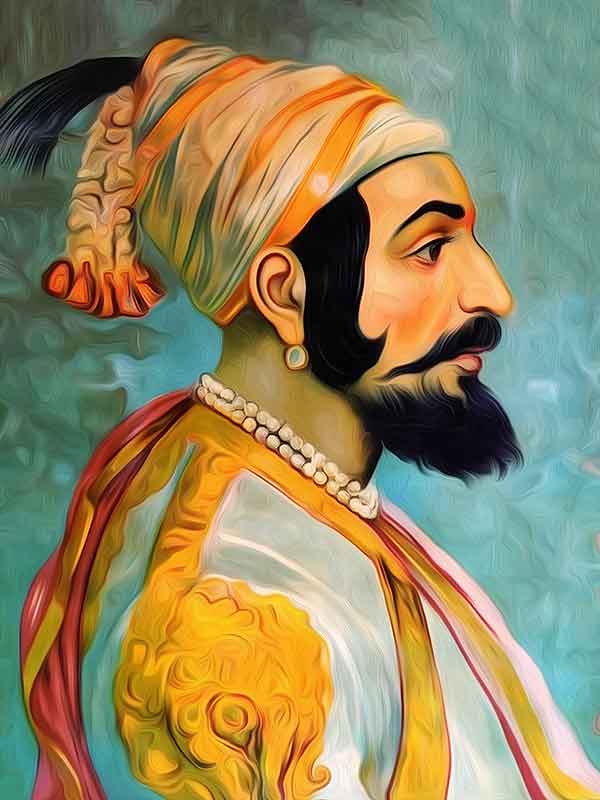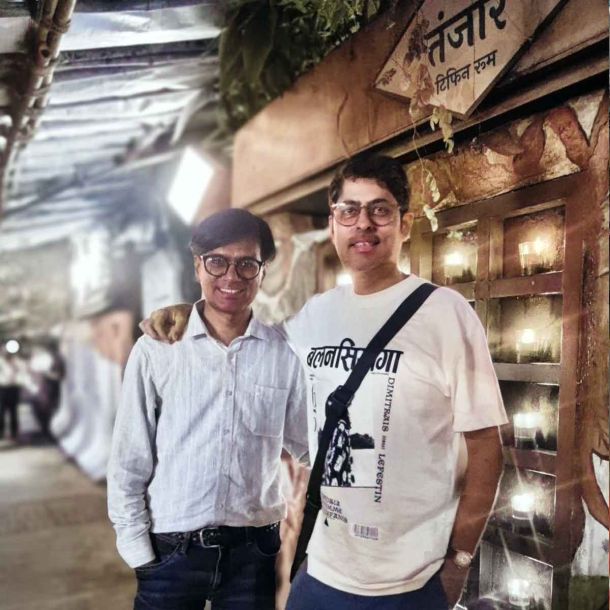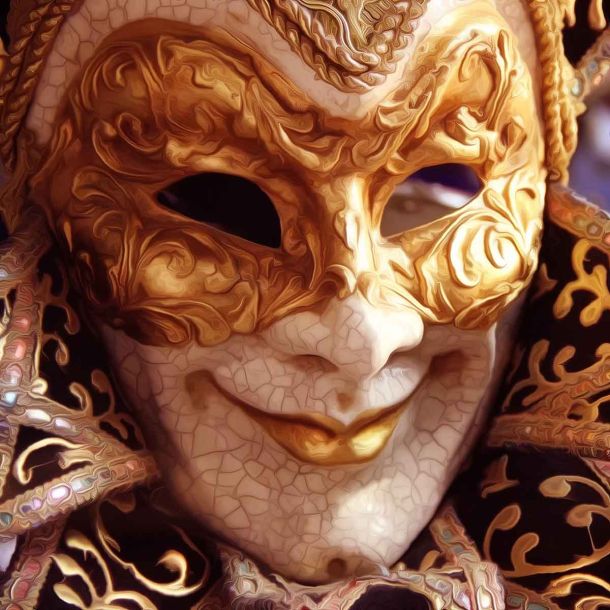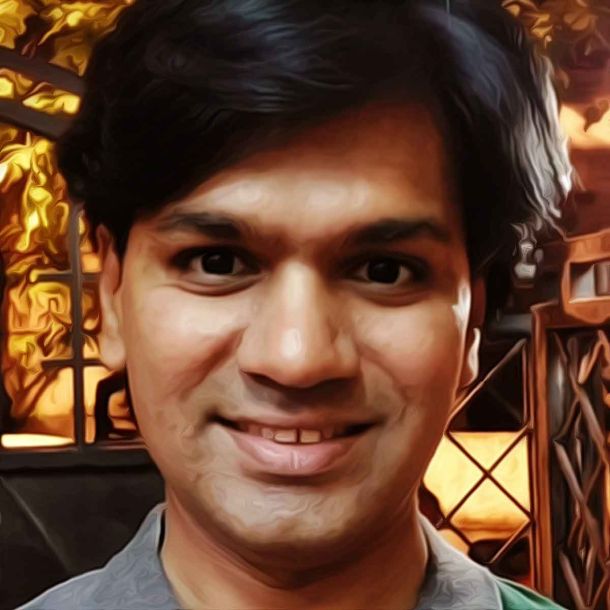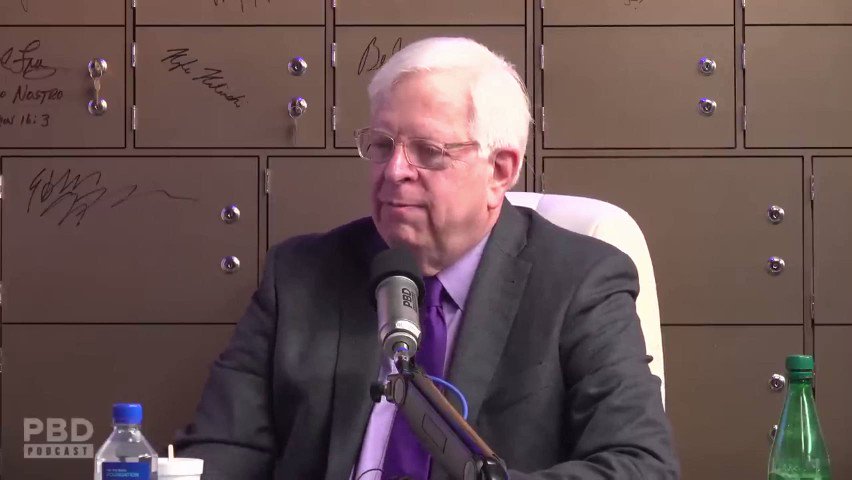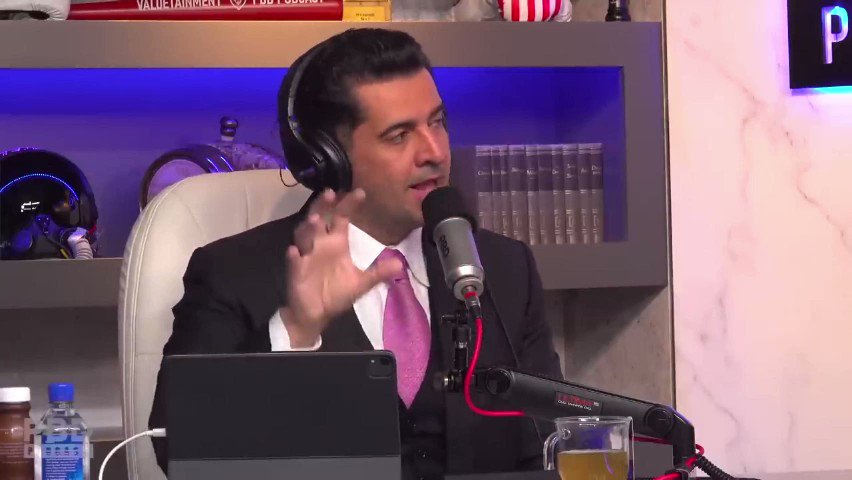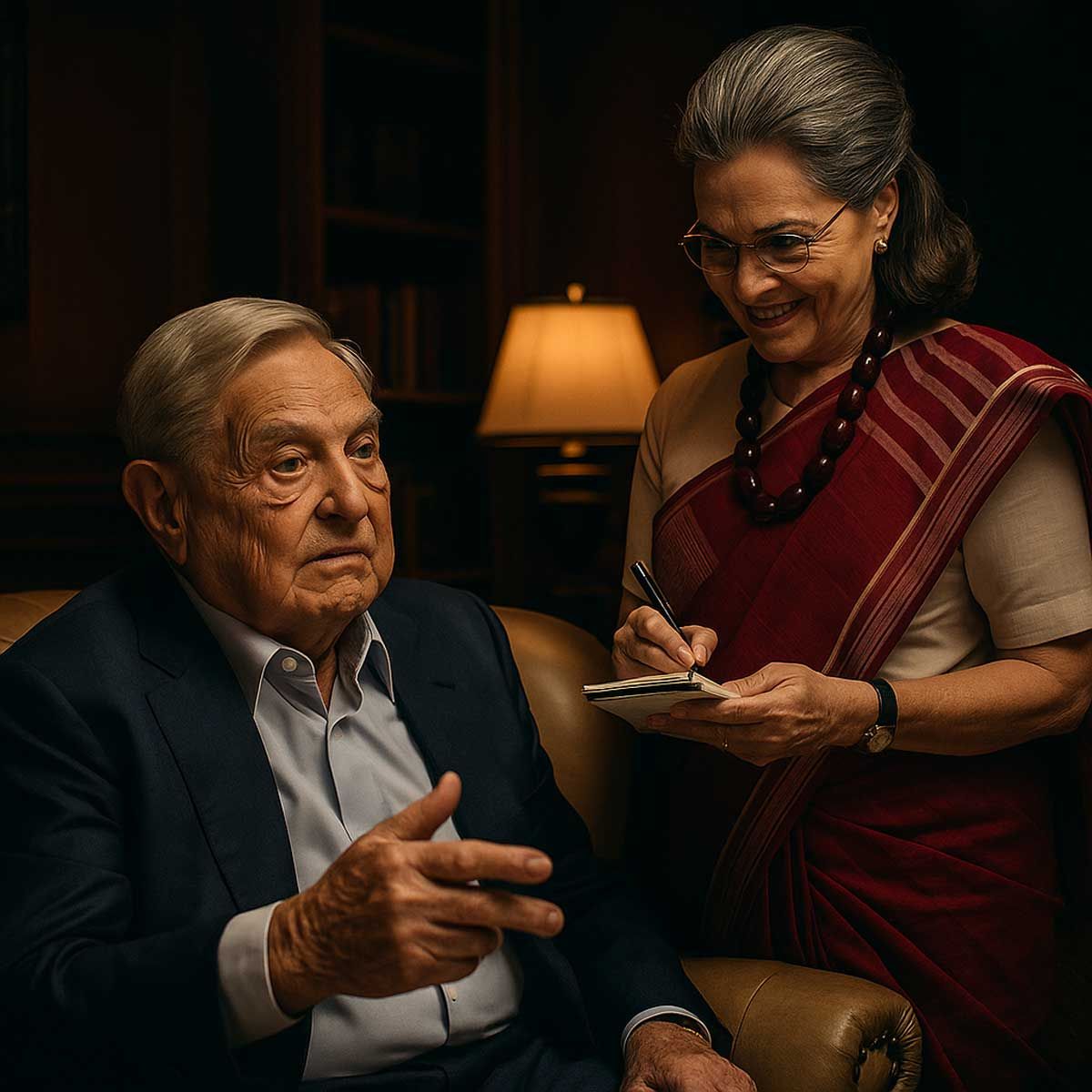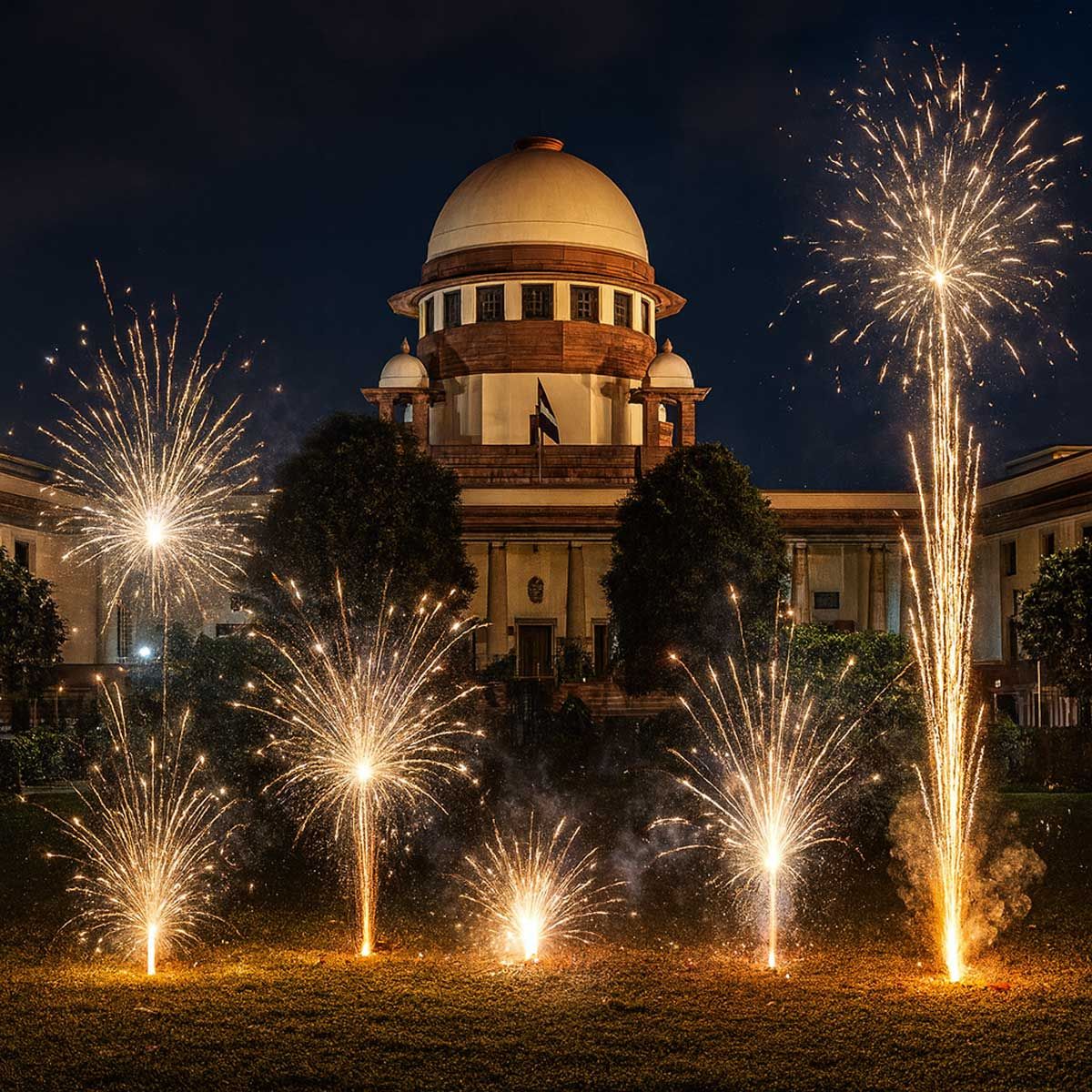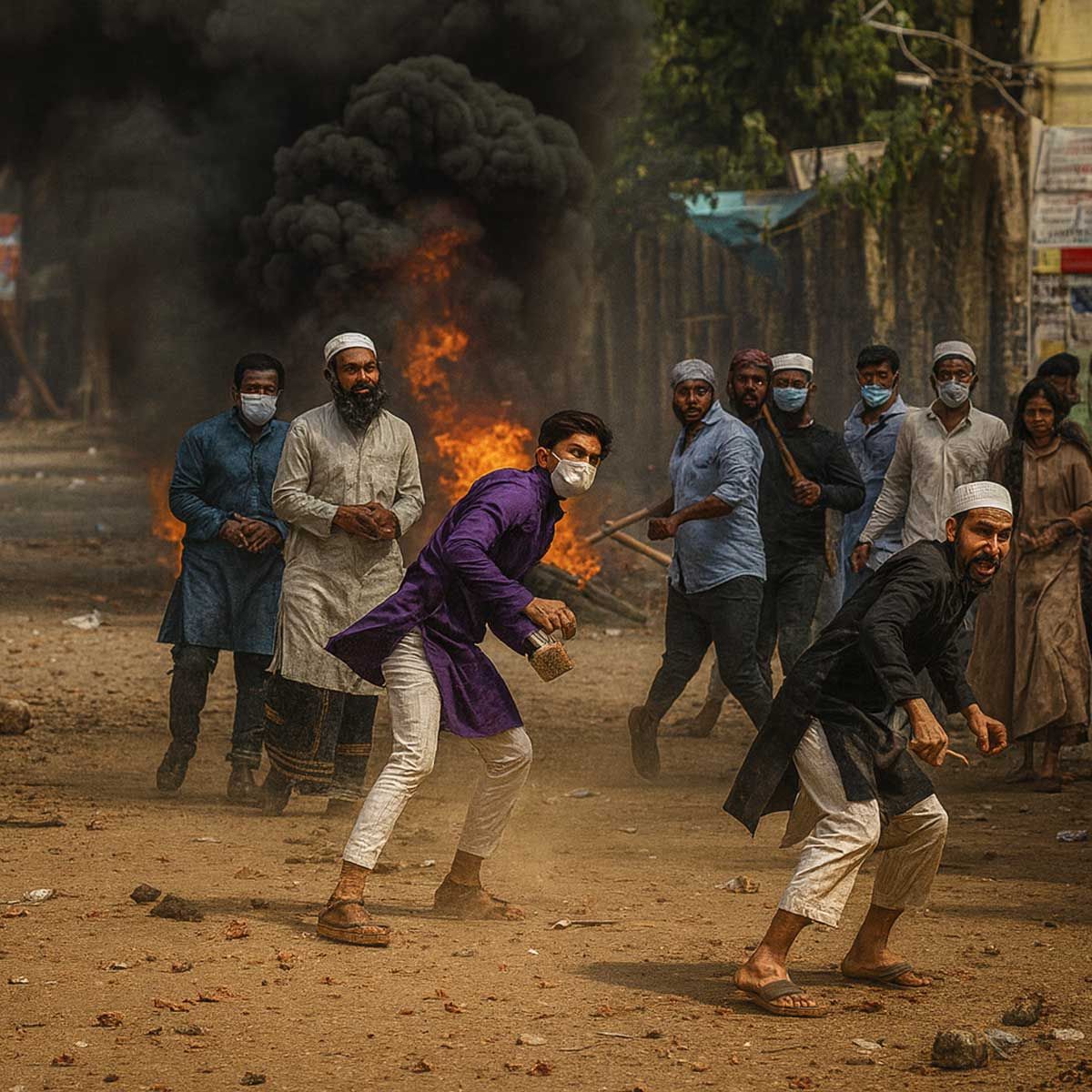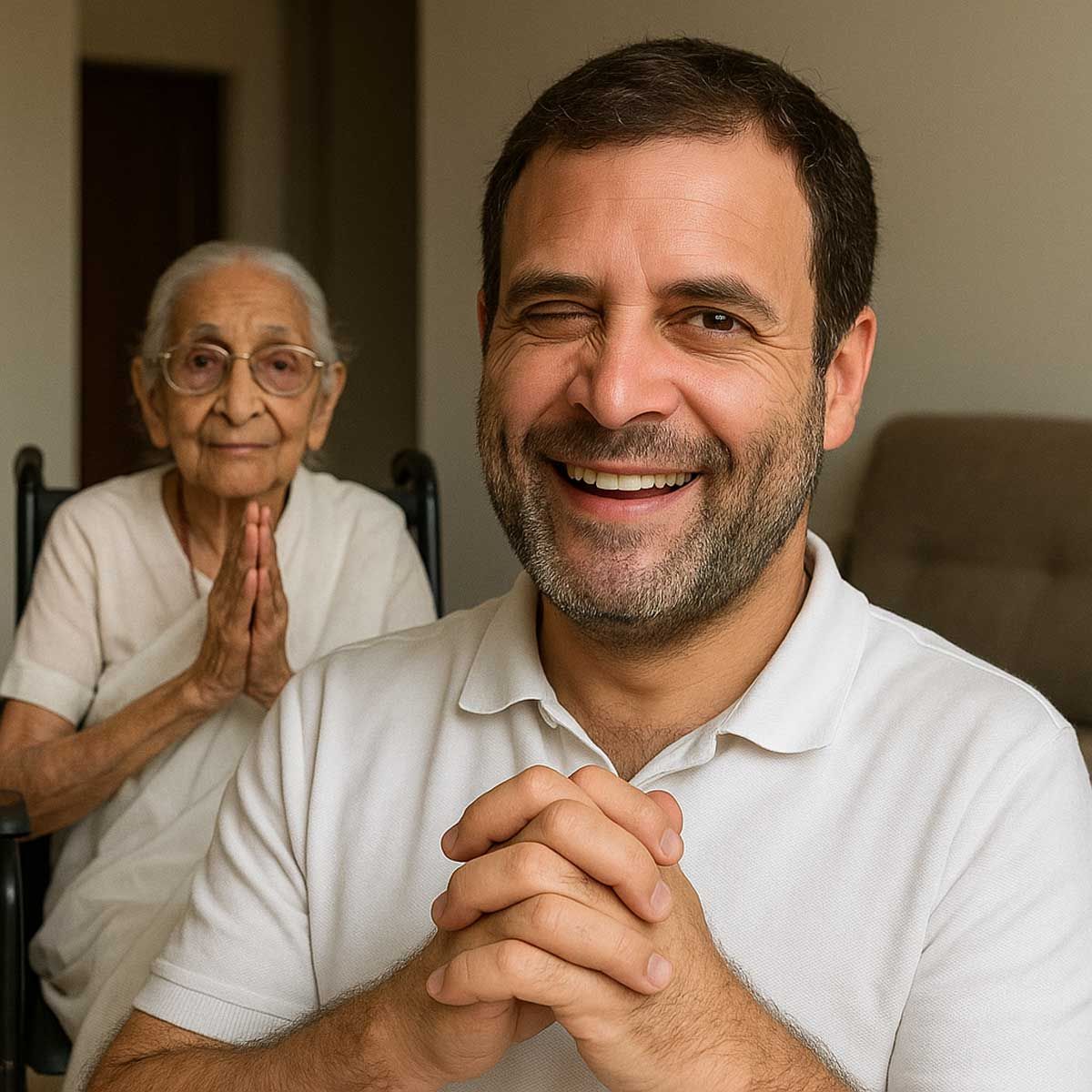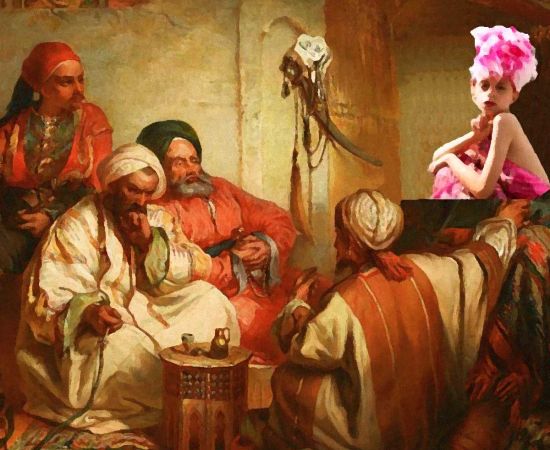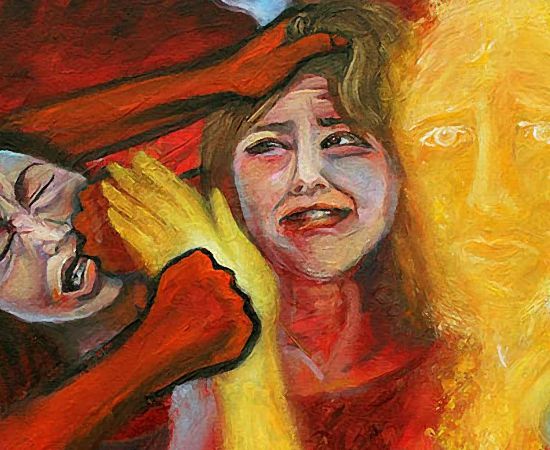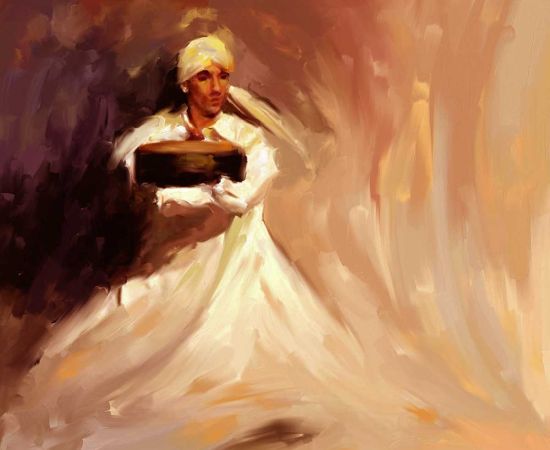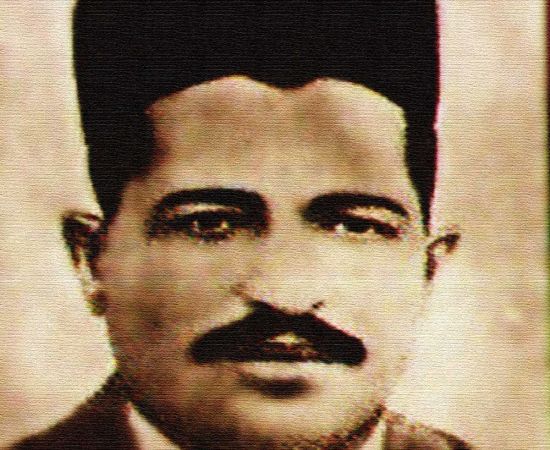More Coverage
Twitter Coverage
Satyaagrah
Written on
Satyaagrah
Written on
Satyaagrah
Written on
Satyaagrah
Written on
Satyaagrah
Written on
JOIN SATYAAGRAH SOCIAL MEDIA
"राज़": After Lalu Prasad Yadav expelled his son Tej Pratap for misconduct, old wounds reopened around the mysterious 2006 death of Abhishek Mishra—BIT Mesra student and boyfriend of Lalu’s daughter Ragini—whose case still echoes with secrecy and suspicion
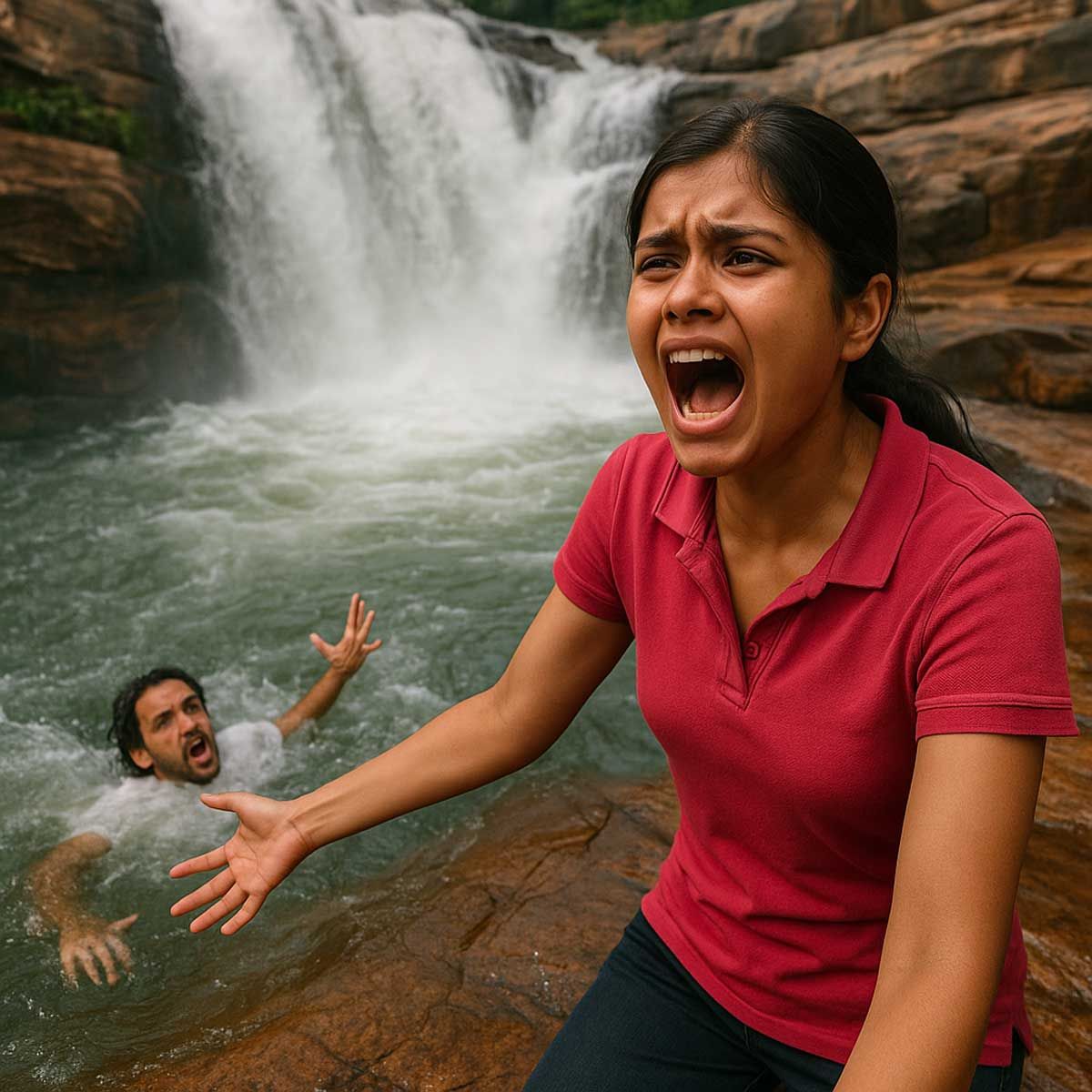
At a time when the spotlight shines harshly on the Yadav family, following Lalu Prasad Yadav’s decision to expel his elder son, Tej Pratap Yadav, for what he called “irresponsible behavior”, memories of another deeply personal and politically sensitive chapter are being revisited. Tej Pratap's removal from both party and family was publicly announced on social media with a blunt message from the Rashtriya Janata Dal (RJD) patriarch:
“Ignoring moral values in personal life weakens our collective struggle for social justice. The activities, public conduct and irresponsible behavior of the eldest son are not in accordance with our family values and traditions. Therefore, due to the above circumstances, I remove him from the party and family. From now on, he will not have any role of any kind in the party and family. He is expelled from the party for 6 years.”
He followed up with another remark hinting at personal autonomy and dissociation:
“He is capable of seeing the good and bad and merits and demerits of his personal life. All those who will have relations with him should take their own decisions.”
This statement, paired with a viral Facebook post from Tej Pratap revealing a long-standing relationship with a woman named Anushka Yadav, opened the door once again to public scrutiny of the Yadav family’s private affairs. In his post, Tej Pratap declared:
“The one seen in this picture is Anushka Yadav. We have been known to each other for the last 12 years. We are in love and have been in a relationship for 12 years.”
The internet was swift to remind him of his previous high-profile marriage to Aishwarya Rai, granddaughter of Bihar’s former Chief Minister Daroga Prasad Rai, a union that had ended amid allegations of domestic abuse. The scandal rippled through political and personal circles—but for many who recall the past, this uproar also brings back the shadow of another silent tragedy in the Yadav family—the mysterious death of Abhishek Mishra.
|
Back in December 2006, a young man named Abhishek Mishra, who was pursuing his final year in Computer Science at the prestigious Birla Institute of Technology (BIT) Mesra in Ranchi, lost his life under highly suspicious circumstances. He was only 22 years old. His crime? He loved Ragini Yadav, the daughter of Lalu Prasad Yadav, who at that time held the powerful post of Railway Minister in the UPA government.
The place where this tragic event unfolded was Dasham (Dassam) Falls, a popular and scenic waterfall about 40 kilometers from Ranchi, Jharkhand. What was supposed to be a peaceful picnic among friends turned into a chilling mystery. On December 8, 2006, Abhishek went to Dasham Falls with three companions – Ragini Yadav, Vishal Pandey, and Bharat Anand. According to what the police initially claimed, Abhishek “accidentally” slipped into the water and drowned.
That version of events was what the authorities stood by in the immediate aftermath. According to multiple accounts, Ragini Yadav, who was not just a friend but reportedly in a romantic relationship with Abhishek, made a call to his father that same afternoon. She informed him that his son had drowned—but notably, she gave no details about what had actually happened. It was a short call. There were no explanations, no descriptions of events leading to the drowning—just the shocking news that his son was gone.
Abhishek’s body was recovered the next day, on December 9, after spending nearly 22 hours in the water. Almost immediately after the recovery, the local police facilitated a post-mortem. Strangely, the autopsy was wrapped up in just 15 minutes, a duration widely regarded by medical professionals as unreasonably short. The official cause of death was quickly announced: drowning due to an accidental fall.
The body was cremated in Ranchi the following day, December 10, 2006, and with that, the authorities appeared ready to close the book on the incident. At that moment, it was painted as a heartbreaking accident—tragic, yes—but nothing more. No signs of foul play were acknowledged, and no deeper investigation was initiated.
But this conclusion, presented so swiftly and with such finality, was not convincing to many—especially not to Abhishek’s family.
From the beginning, the official version of events raised eyebrows. The 15-minute post-mortem was seen as rushed and inadequate. Normally, such examinations take at least an hour, particularly in cases involving a young and healthy person who died under unclear circumstances. Yet, this one was finished in record time. The results were equally questionable. While the report cited drowning as the cause of death, it notably failed to mention any external injuries, nor did it highlight the presence—or absence—of significant water in the lungs, a critical marker in cases of drowning.
These missing elements immediately fueled suspicion. For Abhishek’s family, the lack of transparency and the hurried nature of the investigation hinted that something was being hidden. The belief started to grow that Abhishek’s death was not a simple accident, but something far more sinister.
Thus began what would turn into a long, painful journey for the Mishra family—one marked by unanswered questions, ignored pleas, and a quest for justice that has never truly been fulfilled. What really happened at Dasham Falls that day? Why was the investigation so quick to dismiss other possibilities? And what role—if any—did the relationships and power dynamics at play have in ensuring that the truth never fully surfaced?
These questions still echo, nearly two decades later, as the case remains one of Ranchi’s most unsettling unsolved mysteries.
Family’s Suspicions and Forensic Anomalies
As the fog of official narratives thickened around the death of 22-year-old Abhishek Mishra, one voice rose with clarity and painful determination — that of his father, Dr. Subhash Chandra Mishra, a reputed senior doctor and Chief Medical Officer at Ram Manohar Lohia (RML) Hospital in Delhi. From the very beginning, Dr. Mishra was deeply dissatisfied with what the police claimed to be a simple case of accidental drowning. What he saw with his own eyes contradicted the story being sold to the public.
Dr. Mishra, a father grieving his only son, personally examined Abhishek’s body and found wounds that could not be explained by a mere fall into water. These were not injuries from slippery rocks or currents—they told a far more violent story.
Facial and Dental Injuries: A deep cut on Abhishek’s face and a broken upper front tooth. To Dr. Mishra, these injuries didn’t align with someone slipping and falling. Instead, they resembled a blow—a deliberate, forceful impact, suggesting that his son may have been struck in the face.
Leg and Skull Wounds: Dr. Mishra pointed out a severe bruise on Abhishek’s right leg, consistent with being hit by a rod or a blunt object, and a fracture at the back of his skull. These were injuries that could “only result from an assault (e.g. beating with a hard object), not from the natural turbulence of water or a single fall.”
Lack of Water in Lungs: A finding that deeply unsettled the family was the fact that “the post-mortem found little to no water in Abhishek’s respiratory system.” This anomaly suggested something chilling—Abhishek may have died before entering the water. If true, this meant he did not drown in the usual sense. Rather, he may have been killed by another method—possibly asphyxiation. Supporting this was another disturbing observation: “the water turned red with blood and blood was seen trickling from his nostrils.” This was not normal for a drowning—it indicated trauma, possibly from a fatal injury.
Unswollen Body: Despite being submerged for nearly 22 hours, “Abhishek’s body was not bloated or swollen”—a condition normally expected in drowning victims. This added more weight to the theory that his death had occurred before he entered the water.
A local expert, Hemendra Singh, a seasoned diver who had previously helped recover several bodies from Dasham Falls, told the family that Abhishek’s injury pattern was highly unusual. Singh had never seen a drowning victim with similar wounds. His observation lent serious credibility to the family's growing fears.
Then there were the contradictory statements from the two friends, Vishal and Bharat, who had accompanied Abhishek and Ragini that day. The accounts they gave to authorities and media did not match.
Initially, both claimed that Abhishek had gone off “to relieve himself”, implying he might have slipped and fallen. But soon, one friend told the media that Abhishek hadn’t eaten anything that day due to an upset stomach, while the other said they had all eaten lunch together. These weren’t minor inconsistencies—they were critical to the timeline of events.
The autopsy, however, presented facts that destroyed their claims. “Abhishek’s stomach contained about 450 g of partly digested food, indicating he had a full meal roughly 3 hours before death.” Even more revealing was that “the presence of fecal matter in his intestines suggested he had not actually gone to relieve himself prior to dying.” Their story was crumbling, and it seemed to the family that these young men were trying to cover up something deeper.
Another claim made by the group was about mobile connectivity. They said there was “no mobile phone signal at the picnic spot”, which is why they couldn’t call for help. But again, technology told a different story. On checking Abhishek’s seized laptop, investigators found “a photograph… showing one of the friends at the falls actively talking on a cellphone.” This simple yet damning piece of evidence showed that network coverage was present. So why didn’t they call the police? Why didn’t they raise an alarm immediately?
By December 10–11, Abhishek’s grieving parents could no longer remain silent. They went public, openly declaring their belief: this was no accident. This was possibly a murder.
His mother, Pratibha Mishra, a trained psychologist, saw through the façade quickly. She called the police and district administration’s behavior “fishy and suspect,” strongly implying a cover-up. The family had not even received the full post-mortem report—just a one-line statement saying he drowned. They had to formally request the report for an independent review.
Just one day later, on December 12, Dr. Mishra began his crusade for justice. He wrote urgent letters to the Chief Justice of India, the Chief Justice of the Jharkhand High Court, and the National Human Rights Commission, pleading for an independent investigation. He stressed the “multiple injuries on the body” and the “contradictory narratives”, pointing out how the police seemed either incompetent or deliberately evasive.
In an emotional statement to the press, Dr. Mishra said:
“I have nothing left now. My son meant so much to me. I just want the truth to prevail instead of the half-baked theories which the two boys who accompanied Abhishek are dishing out.”
In a crucial clarification, Dr. Mishra made it clear that he did not blame Ragini Yadav.
He stated she was “like my own daughter” and believed she “genuinely loved Abhishek” and “wanted to marry” him. His focus remained on the circumstances and the individuals whose actions and silence raised red flags—not on the girl who had once hoped to be part of his family.
📸 Then came a twist—photos recovered from Abhishek’s personal laptop revealed a stranger at the picnic.
— Satyaagrah (@satyaagrahindia) May 26, 2025
In one picture, taken hours before the death, a man in dark glasses and formal clothes was seen sitting nearby, quietly observing the group. He wore a wristwatch, not typical… pic.twitter.com/Y56ALs9bEZ
Political and Media Storm
It wasn’t long before what started as a personal tragedy began to snowball into a national political storm. Abhishek Mishra’s death—an unassuming engineering student from Delhi—was no longer just a local tragedy. It had touched the highest echelons of Indian politics.
The fact that the case involved the daughter of a senior union minister—Lalu Prasad Yadav, then serving as the Railway Minister—meant it could not stay out of public attention. Opposition parties, especially the BJP, seized the opportunity. They accused the government of a cover-up, hinting that the Yadav family’s influence had derailed the truth.
Former Jharkhand Chief Minister Arjun Munda, a BJP leader, took a public stand. On December 10, he echoed the family's demand and declared:
“We should not merely ignore it by calling it an accident. A high-level inquiry should be ordered.”
Media outlets quickly picked up the scent of a scandal. The Economic Times aptly described it as “the latest tool in the hands of Lalu’s rivals”. With national interest spiking, pressure mounted on the state government and Lalu himself, who now found himself at the center of a storm he could not control.
But the Jharkhand government chose to stand firm—at least initially. Chief Minister Madhu Koda, heading a coalition supported by Lalu’s party, rejected calls for a CBI inquiry on December 11, 2006. He claimed that “state agencies were capable of handling the case” and warned against “politicising the matter.” While acknowledging the loss, he reiterated that “according to the post-mortem, it was a straightforward drowning.”
That stance drew widespread criticism. It looked like the government was trying to shield its powerful allies. As pressure mounted, Lalu Prasad Yadav himself went silent. Neither he nor any family member made any public statements. However, it was reported that Lalu had called CM Koda after the incident, possibly to request that his daughter and her friends be looked after as they were in shock.
The national media was relentless. Prominent outlets gave extensive airtime to the case. NDTV ran a special report titled “Mystery surrounds Jharkhand student’s death,” highlighting how Abhishek’s father claimed the young couple had been planning to marry, and how the “death has become a political issue.”
Print media—both English and regional—kept the story alive. They dissected every contradiction in witness accounts, questioned the autopsy, and repeatedly pointed out the Yadav family’s silence. The Telegraph featured opinion pieces from readers, many of whom demanded an impartial probe, saying only a CBI investigation could be trusted in a case that involved “children of big shots”. Readers criticized the loopholes in the official narrative and questioned the credibility of the state police, especially given the political connections involved.
The case even found its way into Parliament. Lalu Prasad Yadav, by then a seasoned political figure, found himself taunted by his opponents, especially over a separate remark he made about “Jaadu Tona” (black magic). Rivals sarcastically linked this to the “deaths around him,” turning the session into political theatre. Still, no official accusations were ever brought against Lalu or his daughter. Yet the damage had been done—public perception now leaned toward the belief that power had been used to bury the truth.
With growing public frustration, mounting media coverage, and fierce political crossfire, the case reached a tipping point. The stage was now set for the judiciary to intervene.
|
High Court Takes Cognizance (Dec 2006 – Feb 2007)
As pressure mounted from the grieving Mishra family and the public, a decisive moment came on December 21, 2006, when the Jharkhand High Court finally stepped in. Moved by a heartfelt letter written by Dr. S.C. Mishra—a letter addressed directly to the Chief Justice—the court took suo motu cognizance of the case. This meant that even without a formal petition, the judiciary saw enough merit and public concern to act on its own.
The bench assigned to the case was a powerful one, comprising Chief Justice M. Karpagavinayagam and Justice Pramod Kohli. Their decision to intervene came at a time when the state government was resisting central involvement, choosing instead to stand by its earlier claim that the incident was nothing more than an unfortunate accident. But the court’s decision was clear—it recognized that too many questions had gone unanswered and that justice required transparency.
Throughout late December 2006 and into January 2007, the High Court treated Dr. Mishra’s plea as a Public Interest Litigation (PIL). This meant the case was no longer just a family’s cry for answers; it had become a matter of public concern. To aid the court in navigating the growing web of inconsistencies, it appointed an amicus curiae—a “friend of the court.” This role was given to Advocate Rajiv Ranjan, whose task was to help uncover the truth based on facts and evidence.
In a key hearing held on January 9, 2007, Ranjan presented critical pieces of previously overlooked evidence that not only challenged the official police version but raised new, alarming doubts.
Unidentified Onlooker in Photos: Among the most striking discoveries were photos from Abhishek’s digital camera or laptop—retrieved earlier by the police. One image, taken just hours before the tragedy, showed a stranger at the picnic site. This man, dressed in dark clothes and wearing sunglasses and a wristwatch, appeared to be observing Abhishek’s group as they prepared food. He did not resemble a local villager. Most disturbingly, “none of the three friends ever mentioned a third-party onlooker in their statements to police.” The amicus emphasized that this raised important questions. Who was this man? What was he doing there? And why had his presence been kept a secret?
Autopsy and Time of Death Analysis: The court learned that Abhishek’s post-mortem revealed about “450 grams of pasty food in his stomach”, indicating he had eaten around 3:00 PM on December 8. Medical experts concluded that he likely died around 6:00 PM, about three hours after his meal. However, the post-mortem report provided a strangely broad estimate of “12 to 36 hours” as the time of death—far too imprecise for such an important case. The judges were troubled by this discrepancy and the unusual haste with which the autopsy had been completed. The amicus added that the autopsy confirmed multiple injuries and that the cause of death was asphyxia, not typical drowning. In most drowning cases, water is found in the lungs, but here, there was blood instead, suggesting something more violent had occurred before Abhishek entered the water.
Inquest Report Discrepancies: The paperwork itself raised even more red flags. The original police inquest—conducted when the body was retrieved on December 9—reportedly noted visible injuries on Abhishek’s body. But there was a troubling inconsistency: “one version of the inquest report on record was signed by two of Abhishek’s relatives as witnesses, while the copy given to the amicus had signatures of two local unrelated persons.” This discrepancy hinted at possible tampering with official records, or at the very least, serious lapses in procedure.
Local Witness Testimony: The court also took into account the statement of Hemendra Singh, the local diver who helped recover Abhishek’s body. Singh, a man with experience pulling out five prior drowning victims from the same location, stated bluntly that he had “never found injuries” like those seen on Abhishek. His testimony backed the family's claim that this was no ordinary drowning.
Behavior of the Friends: Perhaps the most unsettling observations came from examining the behavior of Ragini, Vishal, and Bharat—the three individuals who had been with Abhishek at the falls. Shockingly, “the three did not assist in the overnight search for Abhishek’s body on Dec 8–9.” By morning, when the authorities returned to the site, they were already gone. Where had they gone? It was later discovered that immediately after Abhishek went missing, the group went to the Deputy Commissioner’s residence, and from there, were escorted to the Chief Minister’s Ranchi residence that very night.
What stunned the court further was that “police did not even take basic statements from the three key witnesses on the day of the incident.” No formal questioning had been done before they vanished. In a courtroom filled with tension, the judges pointedly asked:
“Who stopped [the friends] from meeting the parents of the deceased or prevented them from coming to the spot and where have they disappeared?”
In court, it was also noted that Ragini had reportedly been devastated upon hearing that Abhishek had drowned. Some witnesses even claimed she had wanted to jump into the falls herself out of grief. Yet, strikingly, she never reached out to meet Abhishek’s family—not before, not after the cremation. Given their close relationship, this emotional and physical distance from the bereaved family raised further suspicion. Why didn’t she speak to them? Was it grief—or was it something else? The court remarked that such behavior could suggest that the group had been advised or instructed to stay away.
Altogether, these behavioral red flags and procedural gaps gave the court strong reason to suspect a deliberate cover-up. Rather than helping the investigation or comforting the family, the three key witnesses had been sequestered, possibly to align their versions of events away from public scrutiny.
By February 2007, the evidence had mounted beyond what the court could ignore. The judges came to a firm conclusion: “the state police’s investigation was neither adequate nor credible under the circumstances.”
So, on February 20, 2007, the Jharkhand High Court issued a landmark order. The bench formally transferred the case to the Central Bureau of Investigation (CBI), calling for a complete and independent inquiry. The decision came in the form of a 36-page ruling that openly criticized the conduct of the police and government. The bench observed:
“The circumstances are such that it is reasonable to infer that the police may not be able to discharge its function fairly and impartially,”
The judges highlighted the state government’s resistance—including Chief Minister Koda’s refusal of a CBI probe—and the local police’s insistence that it was “just a tragic accident.” But these assertions held little weight against the unanswered questions, the missing links, and Dr. Mishra’s relentless pursuit of justice.
For the Mishra family, it was a major victory—a turning point in their painful battle. Dr. S.C. Mishra described the court’s decision as:
“a big slap on [the] chief minister’s face because he had prematurely declared it to be a drowning.”
He said he had hope again, that the CBI would “finally find out the truth.” And while the scars of losing a son would never fade, he made it clear he was willing to accept whatever the CBI’s findings were—because it was a neutral agency, free from the political entanglements that had plagued the state investigation.
Even those indirectly in the spotlight felt the weight of the ruling. Bharat Anand, one of the friends who had accompanied Abhishek, responded to the court’s decision. Described in media reports as a 26-year-old college dropout and small contractor, Bharat appeared on the defensive. Still, he spoke candidly:
“There is nothing worse than being accused of killing a friend.”
Despite his tone of sorrow, the High Court had clearly pointed out suspicious elements involving Bharat, Vishal, and Ragini. The CBI would now question each of them—under oath. The truth was no longer hidden behind rushed reports or political silence.
With the High Court’s powerful intervention, what had begun as a “closed case of accidental drowning” was now an official murder investigation, handled by India’s premier investigative agency.
|
CBI Investigation and Findings (2007–2025)
After the Jharkhand High Court handed the investigation over to the Central Bureau of Investigation (CBI), hopes were raised that the truth behind Abhishek Mishra’s tragic death would finally come to light. The court’s ruling on February 20, 2007, gave the CBI full authority to dig into the facts, free from state influence or local pressure.
The CBI team from Delhi, specifically its Special Investigation Cell, formally took charge in early 2007. In March of that year, they registered a Preliminary Enquiry, naming “unknown persons” as subjects—since at that point, no individual had been formally charged. This left the investigation wide open, allowing for every possibility to be explored. By April 2007, the agency lodged a formal FIR, moving the case from preliminary review to active investigation. The lead Investigating Officer assigned was DSP Baliram Prasad from the CBI’s Delhi branch.
The agency began with what many believed should have happened months earlier: a thorough re-examination of all medical and forensic evidence. One of their very first stops was the Rajendra Institute of Medical Sciences (RIMS) in Ranchi, where Abhishek’s post-mortem had been conducted. There, in mid-April 2007, CBI officers met with Dr. Tulsi Mahto, the head of the forensic medicine department, and Dr. C.S. Prasad, the pathologist who had performed the original autopsy. The CBI wanted answers to specific questions: Why was the autopsy done so quickly? How was drowning determined without the presence of water in the lungs? What about the clear signs of injury on Abhishek’s body?
Their goal was simple—determine, without bias, whether Abhishek had been murdered.
Alongside the forensic analysis, the CBI also moved to interrogate the three surviving friends who were present at Dasham Falls that day: Ragini Yadav, Vishal Pandey, and Bharat Anand. Although the details of these interrogations were never made public, media sources reported that the agency considered Ragini’s statement to be especially critical—not only because of her close bond with Abhishek but also because of her political connections. Her account, together with those of Vishal and Bharat, was said to be “important to unravel the mystery.”
It is widely believed that the CBI did question all three thoroughly. They were likely confronted with the inconsistencies flagged by the High Court, including the unexplained injuries, suspicious photo evidence, and contradicting narratives. Despite the scrutiny, none of the three reportedly confessed to wrongdoing. Their position remained unchanged—they insisted it had been a tragic accident.
Bharat Anand, in particular, continued to maintain that he had lost sight of Abhishek near the falls and had no idea how he ended up in the water. However, a disturbing detail surfaced during the CBI's investigation—Bharat had previously been involved in a similar incident in 2002, where another friend died under mysterious circumstances while in his company. The CBI, understandably, would have investigated this past closely to determine any pattern.
Through 2007 and 2008, the CBI collected evidence, interviewed witnesses, and re-evaluated documents. But the path to justice proved harder than expected. No arrests were made. No chargesheets were filed. Despite strong suspicions of foul play, conclusive proof remained out of reach. The forensic findings suggested homicide, not drowning—but the identity of the assailant remained elusive.
The CBI considered three possible scenarios:
One or more of the friends who were present may have played a role.
An outsider—possibly the unknown man in the photo—might have followed them to the falls.
A hired assailant, which was not unthinkable given the political implications.
Still, without solid proof linking any one person to the fatal injuries, the case could not move forward in court.
The case was high-profile, and for a while, it stayed in the public eye. But over time, as no breakthrough was announced, the media spotlight faded. The Mishra family, after fighting so hard for justice, chose to step away from the public glare. Dr. Mishra had always said he would accept the CBI’s findings, whatever they were. And perhaps, when it became clear that no prosecutable evidence had been found, the family had no choice but to come to terms with the silence.
To this day, there is no public record of the CBI officially closing the case. If they filed a final report—possibly an “untraced” or “closure report”—it was never widely reported. That silence in itself speaks volumes. No one—not Ragini Yadav, not Vishal Pandey, not Bharat Anand, not any third party—was ever charged for Abhishek Mishra’s death. No court trial was ever held.
As the years passed, the case quietly went cold.
|
Current Status and Legacy (as of 2025)
Now, nearly two decades after that dark December afternoon at Dasham Falls, the case of Abhishek Mishra’s death remains officially unsolved. The boy who once dreamed of a bright future—who had love in his heart and was on the brink of starting his life—died under mysterious and violent circumstances, and no one was ever held responsible.
What began as a report of accidental drowning evolved into a suspected murder investigation, backed by medical anomalies, eyewitness contradictions, and judicial scrutiny. Yet, the final outcome brought no justice. The Central Bureau of Investigation, despite its authority and resources, never disclosed a conclusive report. And the absence of any indictment suggests that, at least in the eyes of the law, there wasn’t enough to prosecute.
But in the court of public opinion, Abhishek’s story remains a symbol of suspicious tragedy—a reminder of how the truth can be buried under power, influence, and silence. Even today, platforms like Wikipedia list his death as occurring under “mysterious circumstances,” directly referencing how opponents once criticized Lalu Prasad Yadav over the case.
The incident resurfaces from time to time, especially during debates around political interference in justice. On social media, in forums, and in whispers, many people still say “everyone knows what happened”—even if no one can prove it. There are frequent posts claiming “Abhishek was killed in mysterious conditions because of his alleged friendship with Lalu’s daughter.” Some even suggest that political “goons” may have been involved, though no evidence ever confirmed such claims.
As years passed, the tragedy became part of local lore—not just a sad story, but a cautionary tale of what happens when power eclipses truth.
In the personal realm, Ragini Yadav, once at the center of the storm, chose silence. She eventually married Rahul Yadav in 2013 and has kept a low profile ever since, never revisiting the incident in public. Lalu Prasad Yadav, too, faced no legal consequences from the case. For him, it became another chapter in a long political career often dotted with controversy.
But for Abhishek’s parents, silence came not with peace, but with pain. After years of fighting, they faded from media attention. And while they no longer speak to reporters or write letters to judges, one can only imagine the grief they carry—knowing their son’s case remains unresolved, that the truth may have died alongside him.
In reflection, the timeline from December 2006 to 2025 outlines a story riddled with unanswered questions, conflicting stories, forensic doubts, and political barriers. The broken teeth, the fractured skull, the missing water in the lungs, the photo of an unknown man, the rushed post-mortem, the vanishing witnesses—every detail chipped away at the official narrative. And yet, none of it led to justice.
Today, Abhishek Mishra’s case stands unresolved. The file may still exist in some archive, but the hope of answers has long faded. Unless new evidence emerges or someone finally speaks the full truth, this tragedy will remain one of India’s most haunting unsolved mysteries—a tale of a young life lost, and justice that never came.
References:
- Hindustan Times – contemporaneous reports on Abhishek’s family’s call for justice and CBI probe.
- The Telegraph (India) – detailed coverage of forensic findings, contradictions in witness accounts, and High Court proceedings.
- Rediff News – PTI report on Jharkhand CM Koda’s refusal of CBI inquiry and initial post-mortem result.
- Economic Times / India Today – political context and Lalu Yadav’s opponents seizing on the incident.
- Times of India – coverage of the High Court’s order handing the case to CBI and observations on the flawed autopsy (Feb 2007), as well as CBI initiating investigation (Mar 2007).
- Hindustan Times – report on CBI investigators revisiting the forensic analysis at RIMS (Apr 2007).
- Wikimedia Commons – image of Dassam Falls (Jharkhand) for site context.
- Note: All information is drawn from verified news reports and court documents from 2006–2007, and reflects the status of the case as known publicly up to 2025. The case has seen no further official developments in recent years, and remains an open mystery.
 Support Us
Support Us
Satyagraha was born from the heart of our land, with an undying aim to unveil the true essence of Bharat. It seeks to illuminate the hidden tales of our valiant freedom fighters and the rich chronicles that haven't yet sung their complete melody in the mainstream.
While platforms like NDTV and 'The Wire' effortlessly garner funds under the banner of safeguarding democracy, we at Satyagraha walk a different path. Our strength and resonance come from you. In this journey to weave a stronger Bharat, every little contribution amplifies our voice. Let's come together, contribute as you can, and champion the true spirit of our nation.
 |  |  |
| ICICI Bank of Satyaagrah | Razorpay Bank of Satyaagrah | PayPal Bank of Satyaagrah - For International Payments |
If all above doesn't work, then try the LINK below:
Please share the article on other platforms
DISCLAIMER: The author is solely responsible for the views expressed in this article. The author carries the responsibility for citing and/or licensing of images utilized within the text. The website also frequently uses non-commercial images for representational purposes only in line with the article. We are not responsible for the authenticity of such images. If some images have a copyright issue, we request the person/entity to contact us at This email address is being protected from spambots. You need JavaScript enabled to view it. and we will take the necessary actions to resolve the issue.
Related Articles
- "जंगलराज": In Lalu Yadav’s jungleraj, gangsta Shahabuddin ruled Siwan with fear—two brothers bathed in acid, cut into pieces, their witness brother shot dead, yet their father fought 14 years for justice, finally jailing the don in a Supreme Court verdict
- "Being an artist is supposed to be a scam, not a career": CBI asks court to cancel Deputy CM Tejashwi Yadav's bail for 'threatening officers', also accused of involvement in "land-for-jobs" case during Lalu Yadav's tenure as Railway minister in UPA I Govt
- "जंगल राज": Two grandsons of Lalu Yadav's brother have been arrested by Patna Police for the premeditated murder of a police officer's son at a birthday party, sparking a high-profile investigation across Bihar’s political and law enforcement landscape
- In 1999, Shilpi-Gautam murder shook Bihar as they were found in a car at MLA Quarter No. 12, linked to Sadhu Yadav, forensics showed multiple rapes, Sadhu refused DNA testing, Shilpi’s brother kidnapped for reopening the case, yet CBI ruled it suicide
- "JungleRaj Horror": IAS Officer BB Biswas fled in despair as his wife Champa, alongside her mother, maids, and niece, endured two brutal years of rape by Mritunjay Yadav, a close associate of Lalu Yadav, in a shocking abuse of power & political corruption
- Bihar, once a hub of 'Jungle Raj', now eyes private sector reservations, while neighboring UP focuses on actual growth. Can Tejashwi Yadav's promises change Bihar's fate, or is it another chapter in the Yadav family's legacy of empty rhetoric?
- Retired judges slammed VP candidate Sudarshan Reddy for meeting convicted RJD chief Lalu Prasad Yadav in the ₹940 crore fodder scam, as Amit Shah warned of his past rulings
